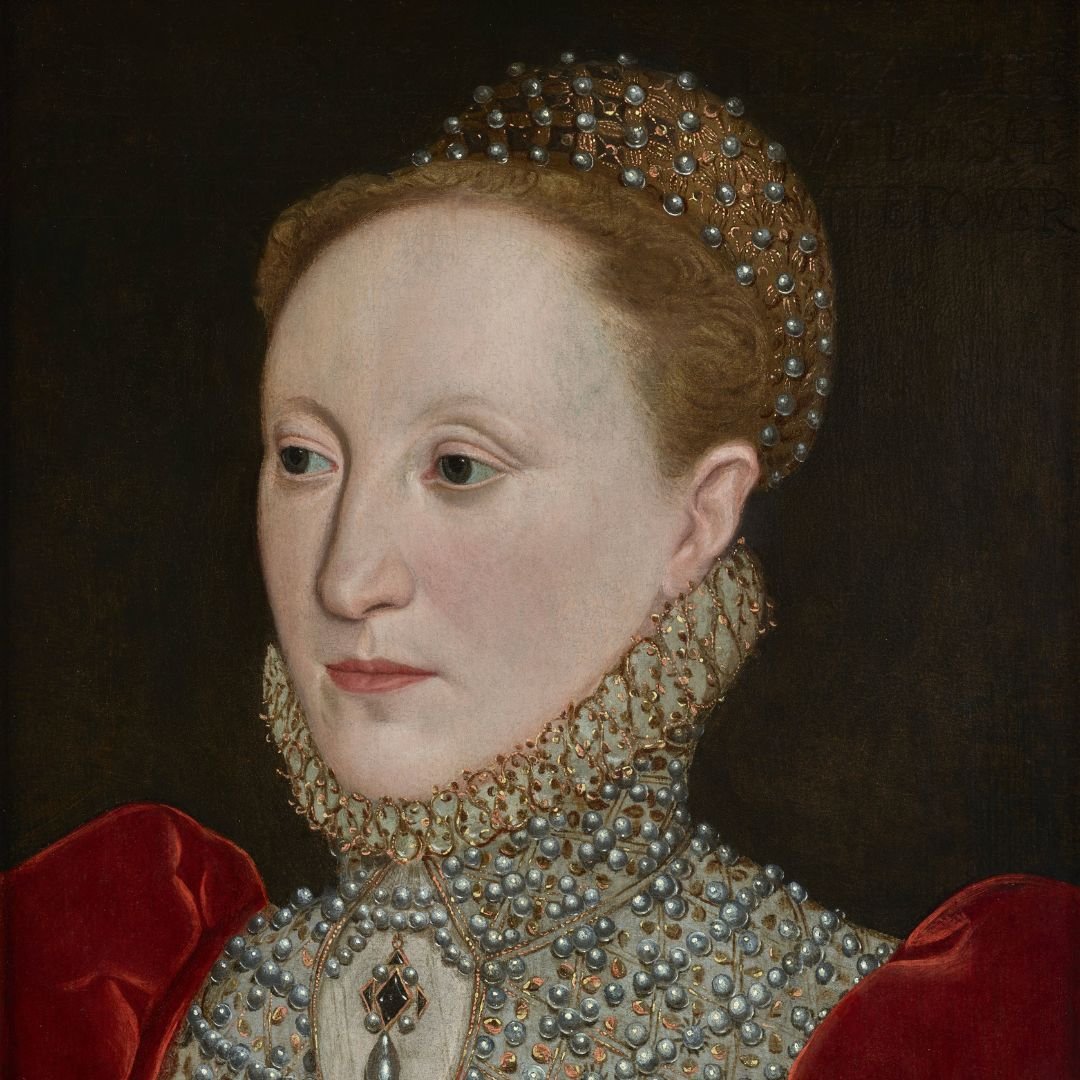Elizabeth I Portrait (1598) In Hardwick Hall
This stunning portrait of Elizabeth I was painted in 1598 when the queen was in her 60s.
Elizabeth had one of the most extensive and lavish wardrobes of all time, and as late as 1599 she was described as ‘most gorgeously apparelled’.
The outfit is also covered in hundreds of pearls, a symbol of purity suitable for a virgin queen.
Even late into her reign these symbols of purity and virginity remained a potent aspect of her public persona.
Elizabeth is shown standing full length on a raised platform with her throne to her right.
The composition of this portrait may have been adapted from a miniature and was probably commissioned by Elizabeth Talbot, Countess of Shrewsbury.
It may have been delivered to the countess’s home, Hardwick Hall, in 1599, and once installed, it would have provided a visual commentary on Elizabeth Talbot’s close relationship with the queen.
The artist remains unknown.
How to see the portrait
Today, the famous painting is on display to the public in Hardwick Hall, Derbyshire.
Designed and built by Robert Smythson, Hardwick Hall is one of the UK’s finest examples of an Elizabethan ‘prodigy house’.
Hardwick Hall was built between 1590 and 1597 for Elizabeth, Dowager Countess of Shrewsbury, aka ‘Bess of Hardwick’.
Through a keen head for business and four marriages to progressively wealthier men, including the esteemed George Talbot, 6th Earl of Shrewsbury, Bess rose to become the richest woman in England, second only to Queen Elizabeth I.
The most striking elements of Hardwick Hall are the vast, multi-paned windows, a statement to Bess of Hardwick’s supreme wealth and power, particularly at a time when glass was considered luxurious.
Even the chimneys were built into the Hall’s internal walls to leave room for more windows, and the striking end result gave rise to the local saying ‘Hardwick Hall, more glass than wall.’
Constructed at the site of Old Hardwick Hall where she was born, the new Hardwick Hall was a particular passion project for ‘Bess the Builder’, and would be owned by her ancestors the Dukes of Devonshire for 450 years.
Their family seat of Chatworth House was also another of her building projects.
After the 10th Duke of Devonshire died, the house was handed over to the Treasury in lieu of Estate Duty in 1956 and it was subsequently transferred to the National Trust in 1959.
Today, Hardwick Hall is managed by the National Trust and is open to the public.
Elizabeth I
Elizabeth I, also known as Elizabeth Tudor, was one of England's most iconic monarchs, reigning from 1558 until her death in 1603.
She was the daughter of King Henry VIII and his second wife, Anne Boleyn.
Elizabeth's reign is often referred to as the Elizabethan era, a period known for its flourishing of English literature, exploration, and culture.
Here are some key points about Elizabeth I:
Ascension to the Throne: Elizabeth became queen after the death of her half-sister, Mary I, who had earned the nickname "Bloody Mary" for her persecution of Protestants.
Elizabeth was the last monarch of the Tudor dynasty.
Religious Settlement: Elizabeth's reign saw the establishment of the Elizabethan Religious Settlement, which sought to find a middle ground between Catholicism and Protestantism.
This settlement established the Church of England as a Protestant institution while allowing some Catholic practices.
Spanish Armada: One of the most famous events of Elizabeth's reign was the defeat of the Spanish Armada in 1588.
England's victory over the Spanish fleet marked a significant turning point in European history and established England as a naval power.
Cultural Renaissance: Elizabethan England was a time of great cultural achievement. It saw the works of William Shakespeare, Christopher Marlowe, and Edmund Spenser, among others.
The period is often considered a golden age of English literature and theatre.
Exploration and Colonization: Elizabethan England was also an age of exploration and colonization.
Sir Francis Drake circumnavigated the globe during Elizabeth's reign, and England established its first permanent colony in North America at Jamestown, Virginia, in 1607.
Personal Life: Elizabeth never married and became known as the "Virgin Queen."
Her decision not to marry was a subject of much speculation and debate during her lifetime.
She was adept at using her unmarried status as a political tool, maintaining alliances through potential marriage negotiations without ever committing to a spouse.
Legacy: Elizabeth I is remembered as one of England's greatest monarchs.
Her reign saw England transformed from a relatively weak and divided country into a powerful and united nation.
She left behind a legacy of stability, prosperity, and cultural achievement that has endured for centuries.
If you enjoyed this blog post, please follow Exploring GB on Facebook for daily travel content and inspiration.
Don’t forget to check out our latest blog post below!
Thanks for visiting Exploring GB.




















